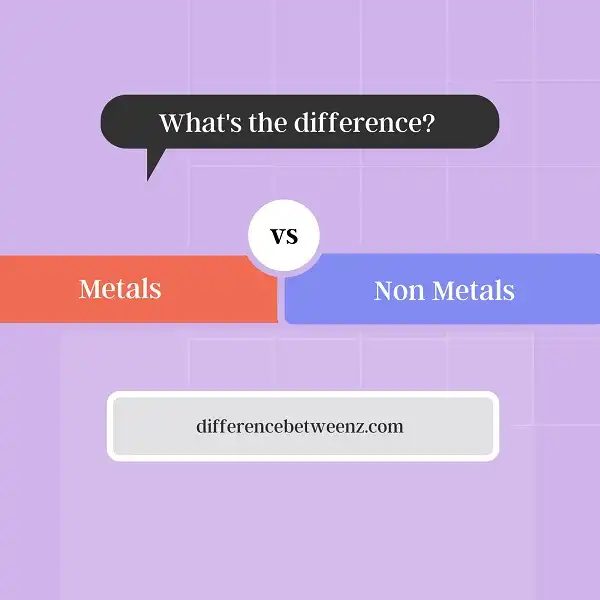Metals vs. Non Metals
What is Difference between Metals and Non Metals? There is a great variety of elements on Earth. All we see is constituted by them or by their combinations, but it is so vast what is not known about our own planet that it is not strange that scientists still find and classify elements today; even creating them from the combination of existing ones.
At present there are 118 recognized chemical elements, which are classified into different categories depending on their physical and chemical characteristics: metals, nonmetals and metalloids. Most elements are metals in nature.
Difference between Metals and Non Metals
Metals and nonmetals differ tremendously in their characteristics and are separated by a zigzag line in the Periodic Table of the Elements. The properties that distinguish one from the other are described below, so read on if you are unsure about the difference between metals and nonmetals or if you just want to get a little more information about this subject.
Metals
Physical properties:
- They are usually solid at room temperature, except mercury, which is liquid.
- They have a glossy and shiny appearance.
- They are good conductors of heat and electricity.
- They have a high boiling point and melt.
- They have high density and are heavy for their size.
- They are malleable.
- They are sonorous.
Chemical properties:
- They have 1-3 electrons in the nucleus of each atom.
- They corrode easily.
- They lose electrons easily.
- They form oxides that are basic in nature.
- They have low electro-negativity.
- They are good reducing agents.
Not Metals
This includes carbon, hydrogen, nitrogen, oxygen, sulfur, selenium and noble gases.
Physical properties:
- They are not glossy. They have an opaque appearance.
- They are bad conductors of heat and electricity.
- They are non-ductile solids.
- They may be in solid, liquid or gaseous state at room temperature.
- They are not sonorous.
Chemical properties:
- They usually have 4-8 electrons in their nucleus.
- They gain or share valence electrons.
- They form oxides that are acidic in nature.
- They have high electro-negativity.
- They are good oxidizing agents.
Finally, if you compare the descriptions we have shared with you, you will realize that the differences between metals and non-metals are quite clear and precise.


